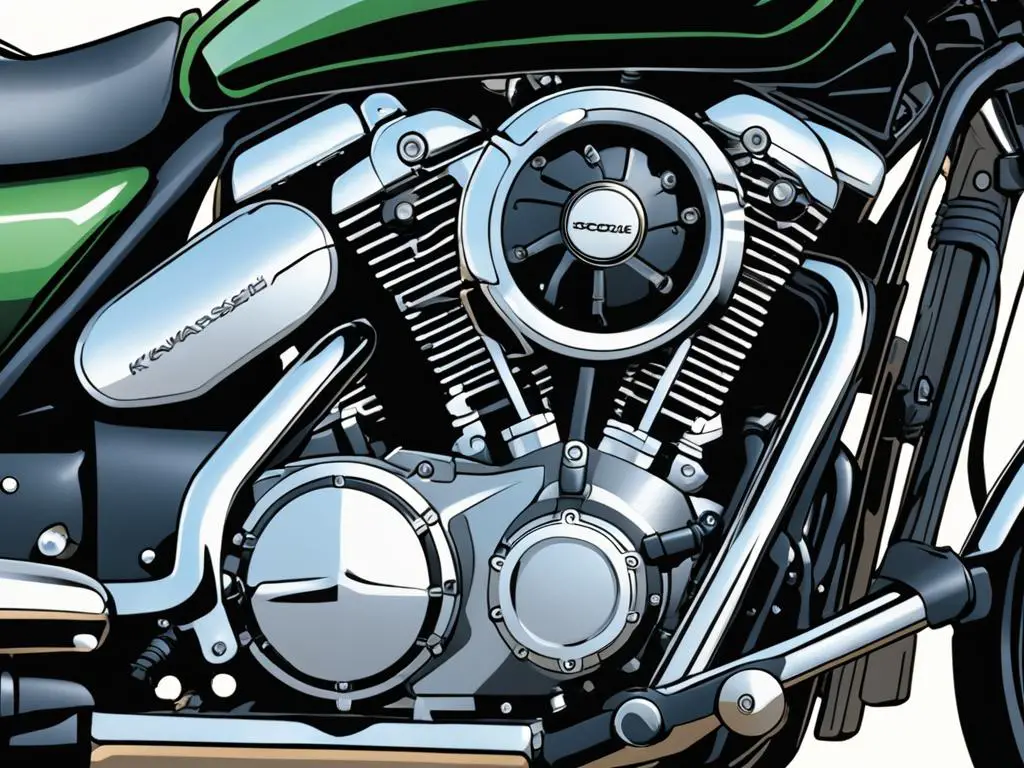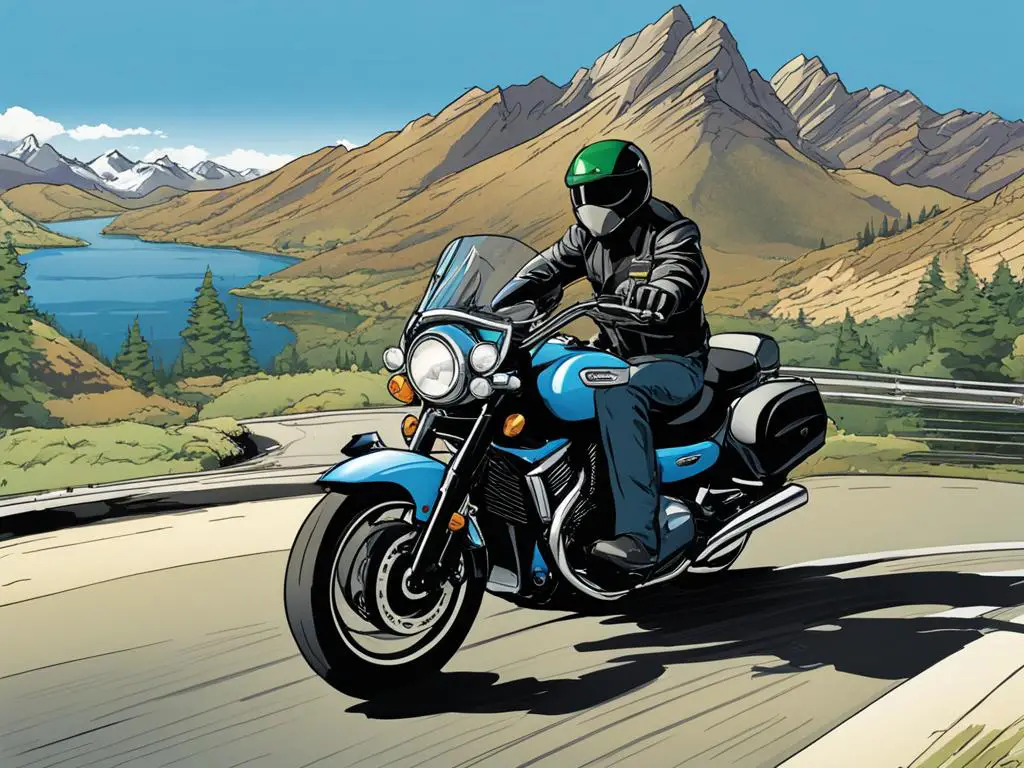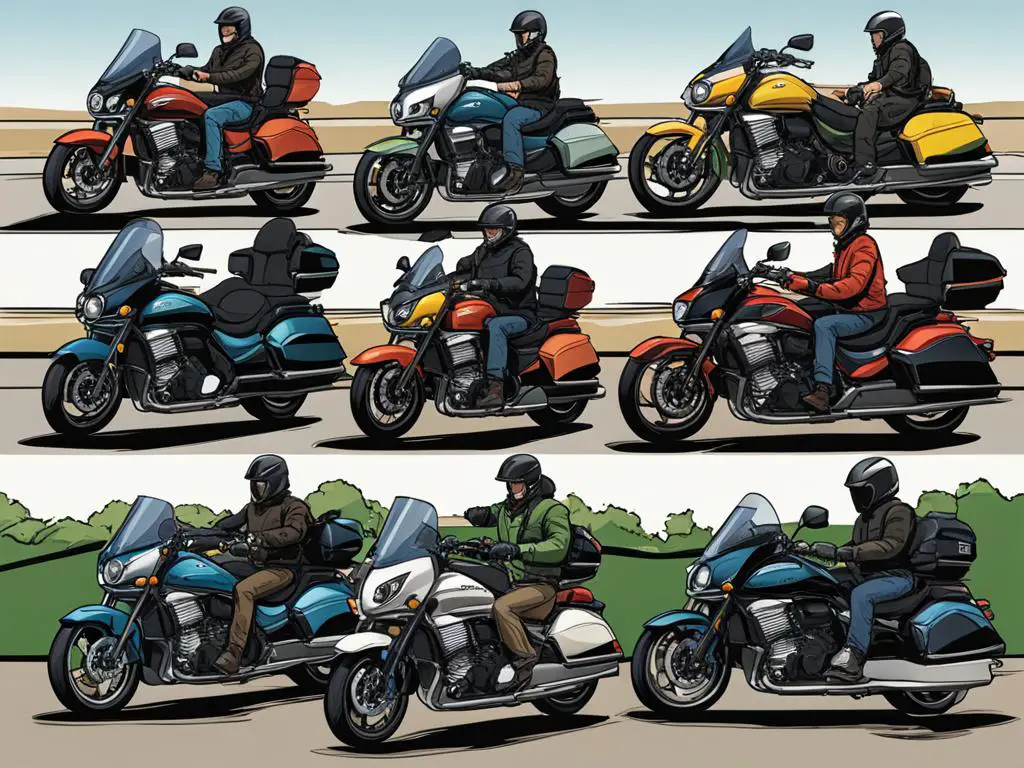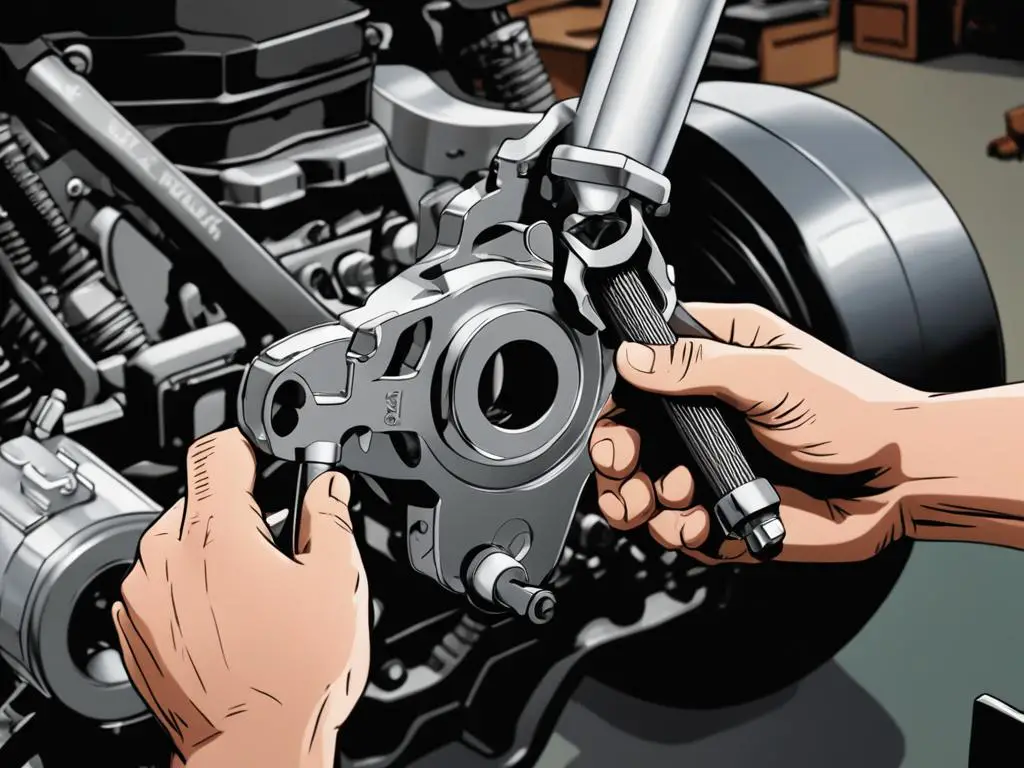For the Kawasaki Nomad 1700 enthusiast, there’s no sweeter sound than the smooth rumble of its powerful engine as it dominates the open road. Yet, every seasoned rider knows that the key to longevity and performance lies in diligent motorcycle maintenance and adept Nomad 1700 repair tips. Even with its robust capabilities and loyal following, the Nomad 1700 is not without its share of issues, from the jarring instability on high-speed turns to the elusive intricacies of oil pump performance. It begs a meticulous approach to Kawasaki Nomad 1700 troubleshooting, ensuring that every ride is as exhilarating as it is secure. Through collaborative wisdom and a hands-on spirit, let’s navigate the common maintenance challenges encountered by Nomad riders, and pave the way towards a flawless cruising experience.
Key Takeaways
- Understanding common issues and performing regular checks are pivotal for the Nomad 1700’s performance.
- Learning self-repair techniques can save costs and improve motorcycle longevity.
- Stability issues may arise from mechanical nuances and require keen attention to tire and suspension settings.
- Access to an informed community and trusted sources can enhance Nomad 1700 repair tips.
- Up-to-date insights on troubleshooting and repairs are a must for every Kawasaki Nomad 1700 owner.
- Empowering oneself with knowledge on motorcycle maintenance is crucial for safe and enjoyable rides.
Understanding Common Kawasaki Nomad 1700 Issues
The Kawasaki Nomad 1700 is revered for its aesthetic appeal and powerful ride, yet even the most durable motorcycles encounter issues. Recognizing these problems early on can be the key to prevent long-term damage and ensure reliable performance. Below, we dissect the most prevalent concerns, from oil pump failure to the nuisances associated with drive pulley noise, offering insights into the signs and potential remedies associated with each.

Identifying Symptoms of Oil Pump Failure
One of the vital components for your Nomad 1700’s health is the oil pump, and failure can lead to detrimental outcomes. Symptoms indicative of oil pump failure can manifest through auditory cues such as engine tapping noises or a loud whining sound emerging from the clutch cover. Visual warnings include the ominous illumination of the check engine oil light, and riders might experience intermittent starting or unusually high oil pressure. Notably, earlier Vulcan models, predominantly between the years 1999 to 2005, are known to be more susceptible to these issues due to their initial use of plastic oil pump components.
Challenges with Regulatory Rectifier Wear
Riders of the Kawasaki Nomad 1700 might face regulator rectifier issues that surface through a palette of electrical mishaps. The regulator rectifier serves a duel role in converting and regulating voltage from the alternator to a suitable level that the battery can store and use. Telltale signs of wear include inadequate starts, inconsistent voltmeter readings, dimming or flickering headlights, and in severe cases, an overcharged battery — all signaling the need for immediate attention to this critical component.
Drive Pulley Noise Complaints
Another reported quirk is the drive pulley noise, a bothersome grumble that might indicate mechanical distress. This noise often relates to tension issues with the drive belt, which if too tight or loose, can create an unsettling auditory experience. An assessment and, if needed, an adjustment of the drive belt may rectify the noise issue. In certain situations, lubricating the belt teeth has also proven effective in reducing the drive pulley noise, quieting the ride to its desired level of discreet power.
By keeping an ear and eye out for these indicators and addressing the first signs of trouble with proper motorcycle repairs, you can ensure the rumble of your Nomad 1700 continues to resonate with the harmony of a well-tuned symphony of power and precision.
Handling Stability Concerns on the Kawasaki Nomad 1700
When it comes to the Kawasaki Nomad 1700 stability, there are critical aspects that need to be evaluated to prevent mishaps on the road. Riders have reported sharp cornering issues, particularly when navigating steep inclines or declines, which may result in a loose rear end feeling akin to sliding on water. These stability concerns are not only alarming but can also lead to potentially dangerous situations for motorcycle enthusiasts. Proper motorcycle handling is essential, and there are steps one can take to ensure their Nomad 1700 maintains optimal performance when curving those tight corners at higher speeds.

Investigating the root cause of stability issues requires a thorough look at the motorcycle’s tire health, suspension setup, and any additional weight distributions or modifications. By understanding the subtleties that affect motorcycle dynamics, riders can make more informed decisions about maintenance and adjustments.
| Stability Factor | Checking Tips | Possible Solutions |
|---|---|---|
| Tire Condition | Check for wear patterns and tread depth. | Replace tires if worn; consider tire types that enhance stability. |
| Tire Pressure | Use a pressure gauge to ensure proper inflation per Kawasaki’s specifications. | Inflate or deflate tires to ideal pressure levels. |
| Suspension Settings | Review suspension adjustment settings for appropriate stiffness and rebound. | Adjust suspension according to rider weight and riding style. |
| Weight Distribution | Assess whether aftermarket accessories or cargo affect balance. | Redistribute weight or modify setup to improve center of gravity. |
To ensure you can ride with confidence through every turn, consider the table above as a starting guide to addressing the Kawasaki Nomad 1700’s handling stability. While Kawasaki has engineered the Nomad 1700 to deliver on performance, riders need to maintain vigilance and responsiveness to any signs of sharp cornering issues that may arise. Staying proactive in motorcycle upkeep can spell the difference between a secure ride and a precarious one.
Addressing Kawasaki Nomad 1700 Cruise Control Quirks
Achieving a seamless cruise control engagement on the Kawasaki Nomad 1700 can enhance the joy of long rides, but certain quirks may require a rider’s attention. Despite being a hallmark feature for highway cruising, some owners have reported difficulty with cruise control operation. Kawasaki cruise issues, such as an awkward engagement process and a sensitive throttle, can lead to unintentional disengagement, potentially interrupting a smooth riding experience. Understanding and maintaining motorcycle cruise control is crucial for optimized use. Let’s delve into common cruise control concerns and share knowledge on maintaining stable, engaged cruising.
Issues with Cruise Control Engagement
Many riders enjoy the convenience of the Nomad 1700’s cruise control function, but some encounter peculiarities during its use. An issue often cited is the positioning and sensitivity of the cruise control buttons, which can cause riders to inadvertently reduce speed while attempting to engage the system. This concern is particularly noted when the activation requires awkward thumb stretches, which may unintentionally roll off the throttle and result in lost cruising momentum.
How to Maintain Control Over the Cruise
In the world of motorcycle riding, precision and steadiness can often mean the difference between a satisfying cruise and a frustrating journey. For the Kawasaki Nomad 1700, maintaining motorcycle cruise control requires a blend of practice and finesse. Cultivating steady hand positioning and a smooth approach to engaging the cruise controls plays a pivotal role. Below are tips to maintain control over the cruise, ensuring an undisturbed ride:
| Challenge | Likely Cause | Recommendation |
|---|---|---|
| Cruise disengagement from throttle adjustment | Sensitive throttle response | Practice a lighter grip and precise thumb control when setting cruise speed. |
| Awkward button placement | Stretching to reach controls | Adjust hand position for better reach before engaging cruise function. |
| Loss of speed during cruise activation | Inadvertent throttle rollback | Stabilize throttle with palm while sliding engagement button with the thumb. |
Adopting these strategies can significantly improve the experience with the Kawasaki Nomad 1700 cruise control system. Whether you are troubleshooting current issues, aiming to prevent future problems, or just looking to refine your riding technique, these insights will assist in sustaining a comfortable and continuous cruising journey.
Tackling the Kawasaki Nomad 1700 Ride Comfort Dilemma
The paramount importance of motorcycle seat comfort cannot be overstated, particularly for those who spend hours on the road with their Kawasaki Nomad 1700. It’s a rider’s cocoon, impacting not just enjoyment, but also health. While the Kawasaki Nomad scores high on ergonomic design, there’s a discernible rift between its seductive allure and the practicality of prolonged saddle time. When it comes to ride quality, the discomfort some riders experience can dull the gleam of an otherwise outstanding cruising motorcycle.
Rider feedback indicates that the contours of the standard seat may contribute to lower back fatigue during extended journeys. The crease where the back of the seat meets the rider’s seating area can act as an inadvertent fulcrum, finding the unwary spine as its lever. Adapting to this challenge without compromising the Nomad’s sleek lines or its rider’s desire for a plush, fatigue-minimizing ride calls for a strategic approach.

Besides personal adjustments and getting attuned to the Nomad’s seating stance, riders might also look towards aftermarket solutions. Adding layers of comfort without distorting the Nomad’s aesthetic requires a balanced eye for quality and fit. Here, the addition of gel inserts, foam padding, or even an entirely new saddle built for endurance can transform a taxing ride into a serene voyage. Explore the following non-exhaustive list of recommendations to enhance the ride comfort:
- Invest in a custom-fit seat that offers tailored support and ergonomic enhancements.
- Explore various cushioning materials like memory foam or gel to even out pressure points.
- Consider a seat cover designed for comfort, which can also protect the original seat.
- Look into adjusting the bike’s suspension to mitigate the impact on ride comfort.
- Regular breaks during long rides can aid in relieving pressure and preventing discomfort.
It’s evident that while the Kawasaki Nomad 1700 is primed for performance, it behooves the enterprising rider to invest in a saddle solution that champions endurance. Kawasaki Nomad ride quality can be optimized not only through mechanical tweaks but also by personalizing the motorcycle to fit one’s unique contours. By acknowledging seat comfort as both a luxury and a necessity, Kawasaki Nomad enthusiasts can transcend the commonplace and achieve a superior, pain-free cruising experience.
Kawasaki Nomad 1700 Problems: Analysis and Solutions
The Kawasaki Nomad 1700 remains a distinguished cruiser with a dedicated following, yet even the most respected motorcycles face their share of issues. In the quest for a perennially smooth ride, understanding the nuances affecting the bike’s performance from rear end stability to instrument accuracy is paramount. Let’s explore some common hurdles that may impact the journey and dissect the practical solutions to enhance the Nomad 1700’s reliability.
Troubles with Rear End Stability
Owners of the Nomad 1700 have occasionally reported sensations of rear end instability, especially noticeable during sharp corner navigation. To counteract the loose feeling that creates anxiety rather than exhilaration, investigating and rectifying the tire and suspension conditions is crucial.
| Rear End Issue | Potential Causes | Remedies |
|---|---|---|
| Loose feeling on corners | Incorrect tire pressure or worn tread | Check and adjust pressure; replace tires if necessary |
| Sliding sensation | Misaligned or inadequate suspension setup | Adjust suspension to optimal settings for load and conditions |
Fuel Efficiency and Instrument Accuracy
Fuel efficiency is a pivotal concern for riders aiming for elongated trips without frequent stops. The Nomad 1700 generally provides faithful readings, but elements such as riding style and road conditions can sway the numbers, making the mpg readings fluctuate. Instrument accuracy is imperative for planning and peace of mind during journeys, with cognizance of throttle use’s effect on fuel calculation metrics being beneficial.
| Component | Performance Expectation | Actual Reading Consistency |
|---|---|---|
| Speedometer | Inform speed within a minimal margin of error | Typically reliable with a reported difference of 1 MPH at 55 MPH |
| Fuel Gauge | Indicate accurate fuel level | Highly reliable; minor deviations with sudden throttle changes |
| Miles to Empty Calculator | Estimate remaining distance before refueling | Varies with riding style; less reliable than other readings |
Ensuring Durability Against Elevation Changes
Finally, the diversity of terrain that a Nomad 1700 might traverse, including significant elevation changes, tests the motorcycle’s technical fortitude. The integration of a reliable fuel delivery system is essential, as it needs to respond dynamically to shifting altitudes to preserve motorcycle stability and performance. Whether cruising from desert floors to mountain peaks, ensuring that your Nomad endures these variations is vital for a nonpareil riding experience.
In summation, through attentive maintenance and addressing each issue with precise solutions, the Kawasaki Nomad 1700 can continue to deliver the strength and enjoyment it’s renowned for, all while ensuring that riders can tackle any road with assurance.
Conclusion
In wrapping up this comprehensive guide to resolving Kawasaki Nomad issues, it’s evident that the beauty of motorcycle ownership extends beyond the thrill of the ride. It encompasses the sense of empowerment that comes from understanding and navigating through the various mechanical and ergonomic challenges that a model like the Kawasaki Nomad 1700 presents. The key to ride optimization lies in ongoing attention to detail, from tire pressure to fluid levels, and a commitment to preventive maintenance.
Equally important is the wealth of knowledge available in your motorcycle owner’s manual, a resource too often underutilized. It provides not just the fundamentals but also insights into addressing the Nomad 1700’s idiosyncrasies. When wrench meets bolt, it’s this manual that often holds the secrets to a smooth and responsive ride. Additionally, the camaraderie and collective intellect found within the Nomad riding community are invaluable. Shared experiences with common issues can lead to innovative solutions that benefit all riders within this tight-knit group.
Ultimately, the legacy of the Kawasaki Nomad 1700 as a revered cruiser continues to be written by those who ride and refine it. Through meticulous upkeep, pursuing expert advice, and embracing community wisdom, the Nomad 1700 can maintain its status as a trusty steed on the open road. As enthusiasts of this iconic cruiser, we forge ahead, committed to the pursuit of a ride unmarred by avoidable disruptions, ensuring that every journey is as fulfilling as the destination.
FAQ
What are common oil pump failure symptoms in the Kawasaki Nomad 1700?
Common symptoms include engine tapping noises, the check engine oil light illuminating, intermittent starting issues, loud whining from the clutch cover area, and unusually high oil pressure readings.
How can I identify regulator rectifier wear on my Nomad 1700?
Early wear of the regulator rectifier may manifest as difficulty starting the motorcycle, and it can potentially lead to overcharged batteries, indicated by swelling or leaking.
Are there any solutions to the drive pulley noise complaints in the Nomad 1700?
Yes, addressing drive pulley noise often involves correcting the belt tension or oiling the belt teeth to ensure smooth operation and reduce excess noise.
What could be causing my Kawasaki Nomad 1700 to have stability issues during sharp turns?
Stability concerns, particularly on sharp turns at high speeds, may stem from a variety of factors, including tire conditions, suspension settings, or possible mechanical defects that need to be diagnosed and addressed.
How do I manage cruise control quirks on the Kawasaki Nomad 1700?
Cruise control quirks, such as inadvertent cancellation or loss of speed during engagement, can be managed by practicing smooth button engagement and maintaining steady hand positioning to keep the cruise feature functioning as designed.
What can I do about discomfort while riding the Nomad 1700 on long trips?
Rider discomfort, particularly related to the bike’s ergonomics or seat shape, may require adjusting the seating position, adding cushioning, or investing in an aftermarket seat designed for greater comfort on longer rides.
How do I troubleshoot rear end stability issues on my Kawasaki Nomad 1700?
Troubleshooting rear end stability issues involves inspecting and potentially adjusting the tire condition, air pressure, and suspension settings to ensure the motorcycle handles safely in various conditions.
What should I know about the fuel efficiency and instrument accuracy of the Nomad 1700?
Fuel efficiency can vary based on road conditions and riding habits. Instrument accuracy for speedometer and fuel gauge is typically reliable, but the miles to empty feature may fluctuate due to throttle use and elevation changes.
Does elevation change affect the Kawasaki Nomad 1700’s performance?
Yes, elevation changes can influence the motorcycle’s fuel delivery system’s capacity to adjust, potentially impacting the performance and stability of the bike. Riders may need to adapt their riding strategy or seek mechanical adjustments for optimal performance.

Leave a Reply